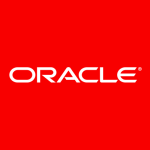What is our primary use case?
We are in a closed environment, so submitting a ticket can be painstaking as only a few of us have access to do so. We primarily use Red Hat for its stability, and it's one of the few Linux operating systems that meet our security constraints.
What is most valuable?
I find the satellite feature the most valuable. It allows us to manage disconnected workstations, keeping their patching, software updates, and bug fixes up to date. We can collect all the necessary updates on a connected system and then transfer them to a disconnected system. Each client thinks it's connected to an external satellite infrastructure, making management very easy.
The Image Builder feature seems very helpful. We currently use Kickstart to build systems.
What needs improvement?
The support can be lackluster sometimes, especially in our disconnected space where we have specific requirements. Occasionally, we encounter support representatives who are not familiar with our setup. So, in that space, personalized and tailored support based on each use case could be better.
In additional features, I would have said being more on the bleeding edge, but RHEL 9 was released, which is a nice push forward. So right now, I don't think there's anything specific. I find the product stack to be pretty decent.
For how long have I used the solution?
I have been using this solution for three years. We are using versions 7.9 and 8.7.
What do I think about the stability of the solution?
It's very stable, but that's also why it falls behind at times. For example, if you have newer hardware like systems A and B that were released within the last year, there might be potential sleep issues, specifically with S3 sleep, that require manual patching and intervention in the kernel. It's because they are trying to support newer systems on a much older framework.
I believe RHEL 9 is supposed to mitigate that a little bit. It aims to provide a balance between the latest stable release and the older version that is, like, five years old. They're trying to meet somewhere in the middle.
What do I think about the scalability of the solution?
We have around 30 workstations and approximately 60 servers.
How are customer service and support?
The customer service and support team depends on the environment you are in. The support can be spotty. The support can be spotty; at least they've tried to be helpful. Sometimes they'll just point you to a documentation link, practically like Googling it for you, and it's like, "No, we've already looked at this. Can you please review the logs further?" And sometimes, I'll have to go and pinpoint specific areas to look at. And then it's like, "Oh, okay."
It's not always very thorough. But it's hit or miss. So I think it's just a people thing. If you get somebody in support who really likes their job or enjoys fixing things, they're going to go out of their way, as opposed to someone who does the bare minimum.
How would you rate customer service and support?
How was the initial setup?
The initial setup is very straightforward. It's pretty easy to enable it. After weeks of setting up a Linux Kickstart, the whole system can be deployed. The whole bare-metal system can be deployed in around thirty minutes. So it's really fast, especially for a bare-metal image with a lot of packages installed.
When it comes to maintaining compliance, I think it's pretty good. However, for risk reduction, we have to rely on other software and tools. So I can't really say that Red Hat provides that specific functionality for us. But I think it's good for maintaining compliance is very easy, especially with satellite. It makes it easy for us to access package and vulnerability information, allowing us to identify and resolve any issues. Overall, it works quite well. If you use the right products, I believe you can have all the necessary components in one place.
The portability of applications and containers is pretty good, although there is one issue. With the transition to Red Hat 8, Docker was removed. As a result, there is an issue with using Podman, specifically related to certain types of authentication in a mixed Windows-Linux environment. Due to the way secrets and related functionalities work, Podman cannot be utilized in that scenario. Therefore, there are some challenges to address in this regard.
I believe Red Hat should have maintained compatibility with Docker or at least their own Red Hat Docker until they could bring their software up to speed.
What about the implementation team?
We did the implementation ourselves. The documentation is pretty good.
What was our ROI?
I save at least a few hours weekly using Red Hat Enterprise Linux (RHEL).
What's my experience with pricing, setup cost, and licensing?
We got the license through a third party. They buy licenses in bulk for us. We pay them, and they handle the licensing.
Moreover, Red Hat's pricing and licensing structure seems fine. There's not a huge separation. The licenses can cover everything without worrying about the core count, socket count, or similar complexities like VMware and other big companies. It's simple enough to figure out which support contract you want based on the level of support you need.
It's an open source product.
What other advice do I have?
Overall, I would rate the product an eight out of ten. The product is good, and the documentation is really comprehensive. The support is satisfactory as well. Based solely on the product itself, without considering support, we find it stable and capable of supporting various architectures. The documentation is particularly good and stands out. It provides valuable resources, including bug fixes, to people with developer accounts, which are free. Having all that information available is very helpful and resourceful, especially when troubleshooting Linux-related issues.
The documentation is very good, making it easier to troubleshoot any peculiar Linux-related problems.
Disclosure: My company does not have a business relationship with this vendor other than being a customer.


















